A recent Washington Post article about dogsledding in Michigan claims that human caused climate change has reduced the season for racing due to warmer temperatures and less snowpack. Data show that there is no declining trend of snow cover across North America during the fall and winter seasons.
The article, ‘Climate change is causing Michigan dogsledders to shift gears from snow to dry land’, wrongly places the blame on anthropogenic (human caused) climate change.
Washington Post writes:
“Richard Rood, a professor of climate science at the University of Michigan, said that principally because of man-made climate change, Michigan’s cold seasons are different now — and, in portions of southern parts of the state, winters are often wetter.
…
This may sound like the end of an era, with dogsledding fading away in southern Michigan as the snow edges north.
Prognostications that the “end of snow” is near have been made ad nauseum over the past three decades, and they’ve all proven wrong. As discussed in by Climate Realism, predictions of declining snowfall always depend on model projections. Real world data on measured snowfall and trends refute these fear mongering claims. Just this year, for example, the National Oceanic and Atmospheric Administration (NOAA) predicted the maximum ice cover in the Great Lakes would barely reach 13 percent. Reality rebuffed NOAA’s modelling, when ice coverage peaked at almost 60 percent coverage, as seen in Figure 1 below.

High ice years on the Great Lakes are not only still possible, but have occurred regularly, including recent years of near record-breaking ice coverage. As shown in the Figure 2 below, NOAA’s Great Lakes Surface Environment Analysis (GLSEA) data shows only a minor decline in ice coverage since 1975.
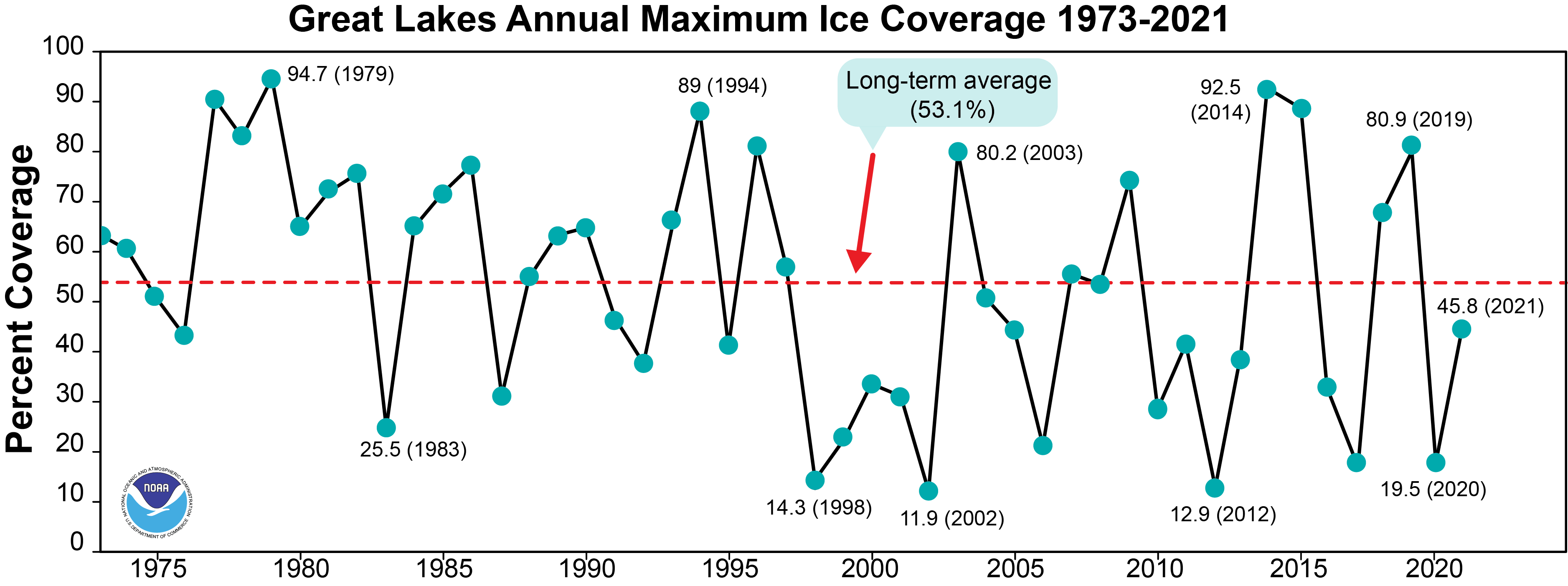
Snowfall in that region is tied closely to the Great Lakes’ ice coverage, due to the “lake effect”. Lake effect snow is reduced during years of high ice cover, as less lake water can evaporate into the West to East wind to create snow because of the ice cap over the water. Ice coverage on the Great Lakes is weather dependent: as can be seen in the Figure 2 above, there are wide swings from year to year. This is a weather related event, not climate; colder winters in the Great Lakes lead to less snow.
There may be a local reduction of snow in some parts of Michigan, but data from the Global Snow Lab at Rutgers University, demonstrates that the average snow extent in North America has increased during the fall and winter over time, refuting the claim that snow is “edging north.” This data is reflected in Figures 3 and 4 below.
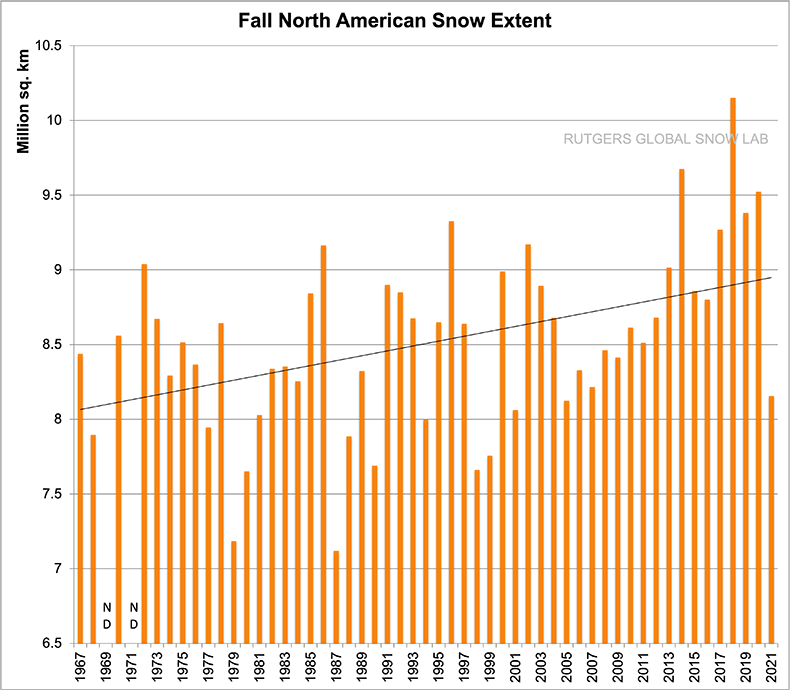
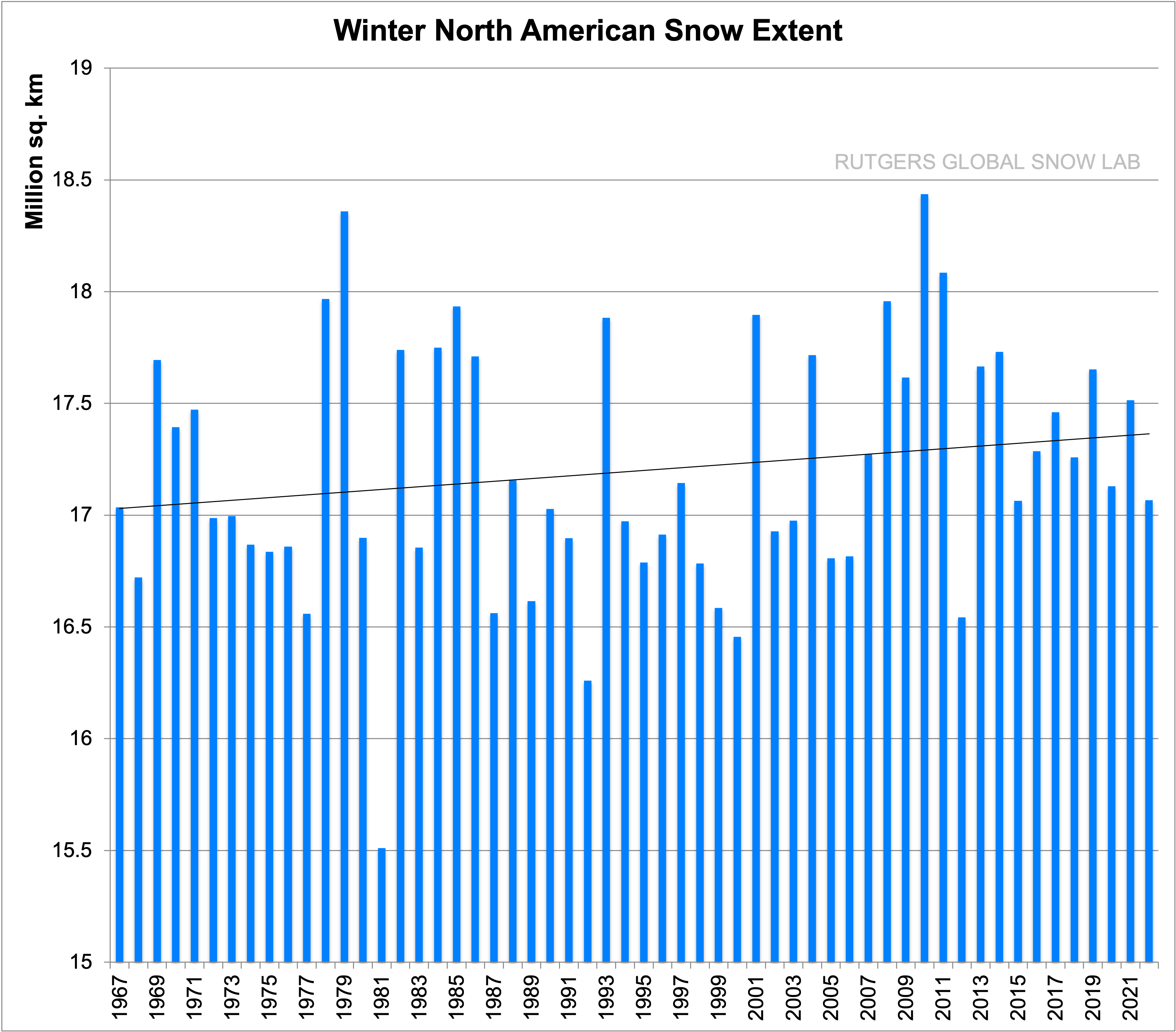
Data from Rutgers shows snow cover anomalies in North America also see moderately increasing trends September through February.
Interestingly, even the study Washington Post cites says that while the average temperature of Michigan has raised by about 2 degrees Fahrenheit since 1951, it also says Michigan should see snowier winters in the near term due to the lake effect.
From the study:
Reduced lake ice cover and enhanced evaporation may lead to increased lake-effect snowfall in the near term, but rising temperatures will cause more winter precipitation to fall as rain as opposed to snow across the region by late century.
…
Annual average ice cover on the Great Lakes underwent a shift from higher amounts prior to the 1990s to lower amounts in recent decades. There remains strong year-to-year variability, and high ice years are still possible. Lake-effect snowfall has increased in northern areas and may continue to increase through mid-century.
Based on available data, there is no cause to fear for the future of dogsledding, especially in northern Michigan. The Washington Post cherry-picked statements from a study, and ignored the rest. Journalists should avoid attributing every ephemeral, likely temporary, change in local weather to global warming aka “climate change”.


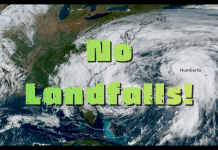

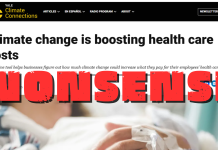
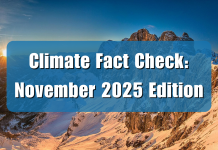








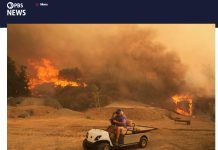
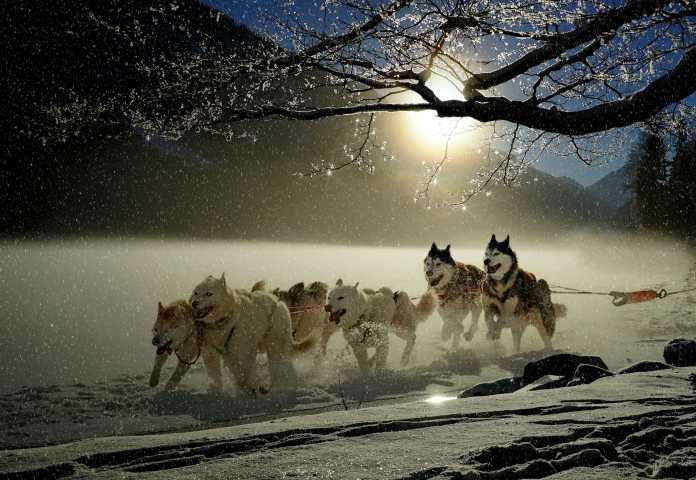









You left out the Spring Snow Extent which shows a large decline. Since all charts are from the same source, I believe that choice was deliberate, and biased. I don’t like being deceived and you should be ashamed of yourself. The Fall and Winter charts you show have up trends. The Spring chart has a significant down trend. Add up all the charts and there is a small DOWNTREND since 1967 on the combined linear trend line. Meaning your choice of the two charts out of three creates a deception. If I wanted a deceptions, I would read leftist climate articles.
Concerning snow in Michigan which has almost no correlation with snow charts of North America I have lived in SE Michigan since 1977 — since 1987 in the same home, and for 10 years before that four miles south. So I have first hand experience with Michigan weather over 45 years. Those of us in South Eastern Michigan are thrilled that our winters are not as cold as they were in the 1970s. And our snow on southeastern Michigan this winter was, by far, the least snow in 45 years.
In our upper peninsula, where few people live, the weather is always colder with more snow. And if there was ever a time with not enough snow for dog sledding, that’s good news, in my opinion — leave those dogs alone.
I believe there may just be a misunderstanding, so thank you for your comment!
I do not think it is appropriate to include springtime snow extent from this dataset, as the “Spring” months are March through May, with the bulk of anomalous lows in May. I also do not think it is appropriate to average the three sets into one as a description of snow coverage trends. My understanding is that even during years of high snowfall during the spring, it is not enough to make a decent lasting snowpack outside of the far north, with spring sunshine quickly melting it regardless. Perhaps I should have been clearer and mentioned this reasoning, but I certainly am not trying to be deceptive!
Regarding your claim that today Southeast Michigan is “less snowy” than the 1970s, data from NOAA’s Detroit snowfall history does not agree. https://www.weather.gov/wrh/climate?wfo=dtx
Plot I made is here: https://imgur.com/a/xUJ5ppI
Assuming that this year sees no more snow in Detroit, there are still quite a few years, including some in the 70s and 80s, that fall below 2022’s total.
I would be interested to know if you have data to counter this, all I did was pull up NOAA’s snow records for the area. I picked Detroit because it has the most complete dataset. When I chose a dataset for Adrian, there were a lot of missing datapoints in the set. Ann Arbor had quite a few missing points as well though not as many, and when I plotted it sans the missing years, the trend was still positive for snowfall.
The same source however does show that your observation on winter temperature is consistent with the data over the same period of time (’70-2022), which I think we both agree is not a bad thing! This of course is consistent with the idea that snowfall increases in the winter months alongside modest warming, but I’m a little skeptical of the rate of warming from any urban source like Detroit.
On the issue of the dogs, we have our most vehement disagreement—I think it looks like they are having fun!
With respect,
Linnea
Sorry Ms. Linnea, You are not going to get my respect because you do not deserve it Your response lowers my respect for your accuracy and common sense. I thought for a moment that you were a good replacement for H. Sterling Burnett, but I was wrong.
The Washington Post was correct — there is less snow in the upper peninsula of Michigan. Mushers themselves have said so, as reported in local newspapers. But the change is too small to affect dog sledding, so there is really no news for The Washington Post to report. In fact, there used to be some dog sledding in the lower peninsula portion of Michigan, but no more. Certainly not this winter. But that’s another subject.
The amount of snow in the Michigan upper peninsula has no correlation to total NA snow, and only a weak correlation with snow in Detroit — 450 miles south. So your entire argument falls apart faster than a cheap suitcase.
You present NORTH AMERICA snow trends as a proxy for the upper peninsula of Michigan. That is nonsense.
You present two of the three Rutgers seasonal snow charts creating the false impression there has been a NA snow uptrend, simply by NOT showing the Spring chart. Combine all three charts and there is a small downtrend. But you apparently prefer to create a false impression, because it supported your narrative. Something I would expect only from leftist Climate Alarmists.
You had a chance to revise your article by adding the third Rutgers chart, but chose not to. That continues the false impression you deliberately created.
You have dismissed this Michigan resident, living a few miles from Detroit, as not worth listening to concerning SE Michigan winters.
An eyewitness for 45 years — 35 years in the same home, and 10 years before that living four miles south.
But obviously to a “database person” like you, what could I know about Michigan winters after 45 years of shoveling snow by hand?
I made the generalization that our winters are not as cold as they were in the 1970s, and had less snow. That does not mean that EVERY year in the 1970s was colder, and had more snow, than EVERY year in the last 10 years.
This year, for one example, required so little 100 foot driveway snow shoveling — just three times for the entire winter — that is was unprecedented for Michigan in 45 years.
But what would an actual 45 year eyewitness know about Michigan weather? Nothing, according to you.
In summary:
You have chosen a ridiculous NA proxy, for the Michigan upper peninsula,
You have distorted that proxy by deleting the Spring chart, creating a false impression about NA snowfall trends, and
You arbitrarily dismiss an eyewitness account of Michigan winters from a long time Michigan resident.
To me this adds up to placing your name in my climate science DO NOT READ list, for authors who are not trustworthy. (Although you may be happy to join the ranks of Al Gore, Greta Thunberg, Joe Biden, AOC and Bozo the Clown).
The UP200 held in Michigan’s Upper Peninsula is one of America’s top-notch sled dog races. The race trail covers over 240 miles of challenging terrain through the areas of Marquette, Grand Marais, Wetmore and Pictured Rocks National Lakeshore and finishes at Mattson Lower Harbor.
Marquette, Michigan, for one example, is 454 miles northeast of Detroit. Similar distances for Ann Arbor and Adrian. The weather is Detroit, Ann Arbor and Adrian is not a good proxy for where the sled races are held. Much less a North American average.
Concerning the dogs:
Why don’t you and your friends pull the sled with one dog as the musher. Then report back on how much fun it was. For you, that is. I’m sure the dog would have had a lot more fun being the musher.
Perhaps we will someday find
something that we agree on.
But I doubt it.
Richard Greene
Bingham Farms. Michigan
My motto:
I have a theory
that it is impossible
to prove anything,
but I can’t prove it.
PS: Isn’t is fun to publish on a website
that allows vicious, ranting and raving
comments?